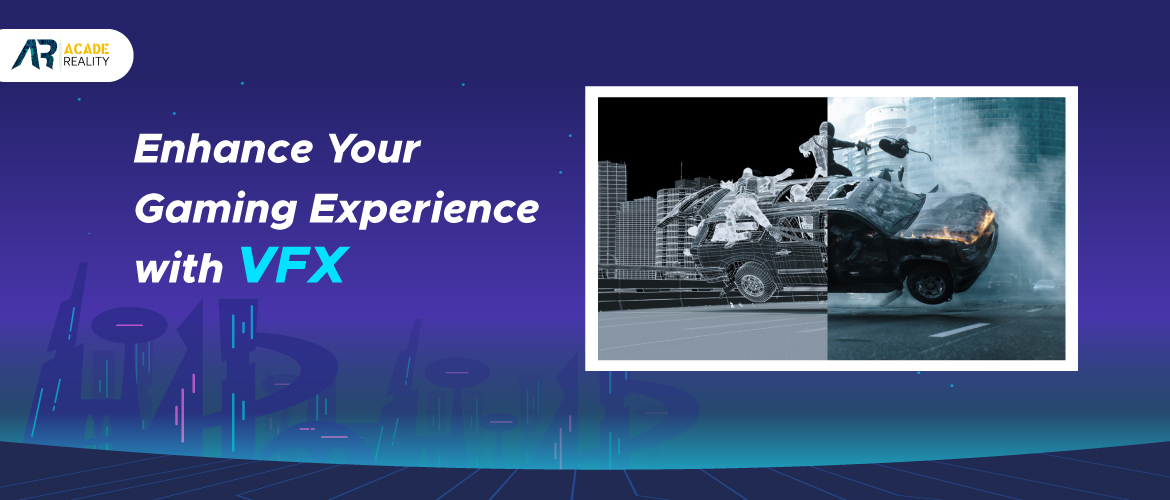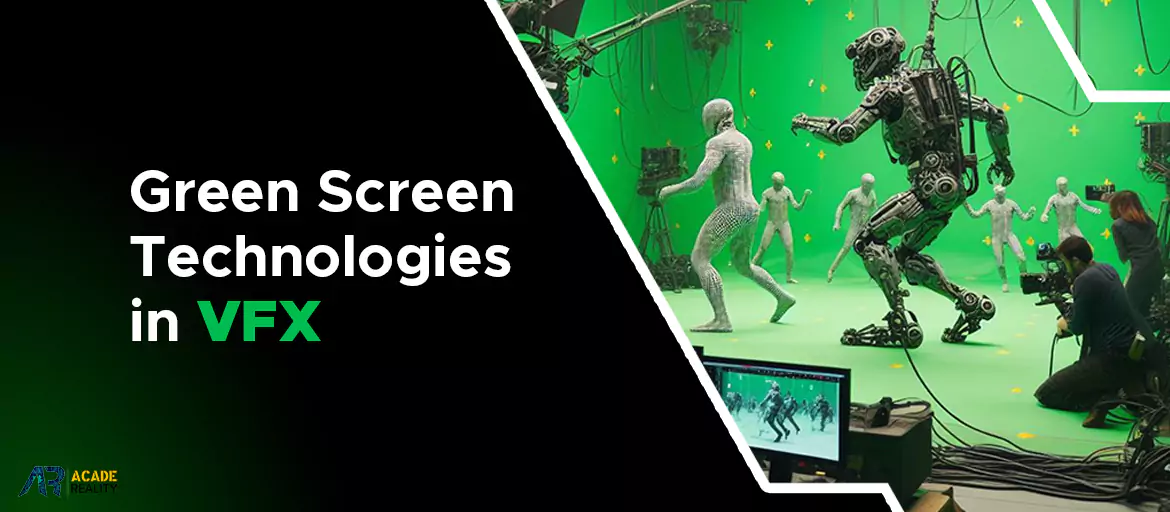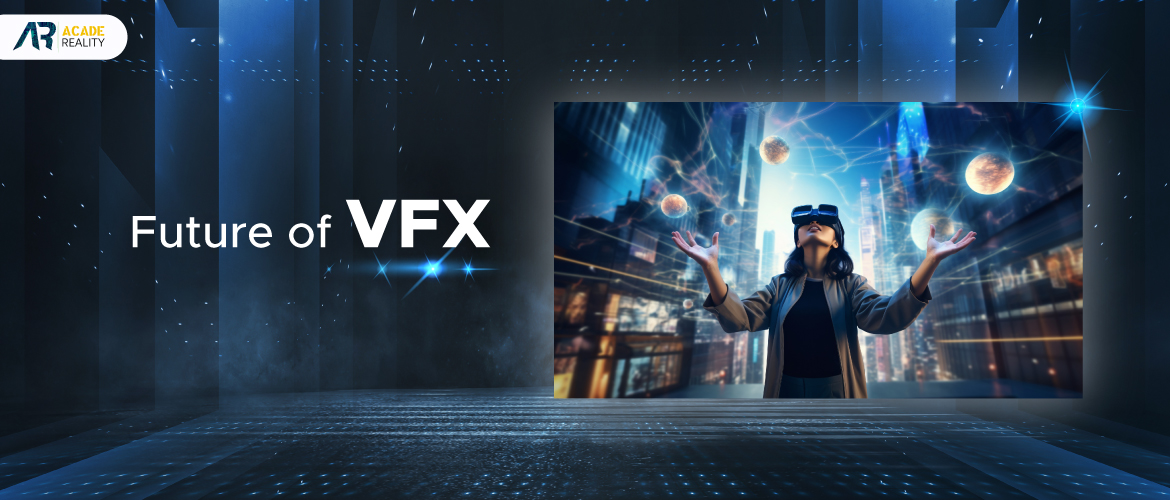Enhance Your Gaming Experience with VFX

Introduction
The Impact of VFX in the Gaming Industry is undeniable. It has brought a new dimension to the way we experience games, making them more immersive and engaging than ever before. Whether you're an everyday gamer or a hardcore enthusiast, understanding the significance of VFX gaming is essential to appreciating the art and technology behind this thrilling entertainment medium.
What is VFX in Gaming?
Before delving into the impact of VFX in the gaming industry, let's first understand what VFX in gaming entails. VFX, or visual effects, refers to the art and technology of creating and manipulating imagery to enhance or manipulate the viewer's experience. In the context of the gaming industry, VFX involves the use of computer-generated imagery (CGI) and unique effects to enhance the visual elements of a video game. This can include everything from lifelike character animations and realistic environmental effects to explosions, weather changes, and more.
The Evolution of VFX in Gaming
VFX in gaming has come a long way since the early days of pixelated characters and rudimentary graphics. The transformation over the years has been nothing short of spectacular, and it's not just about making games look better. It's about making them feel more realistic and immersive. The Impact of VFX in the Gaming Industry can be traced through the following key stages:
- Pixelated Beginnings: In the early days of gaming, VFX was limited to simple pixelated animations and basic sound effects. Games like Pong and Space Invaders laid the foundation for what would become a billion-dollar industry.
- 2D Sprites and Simple Effects: As technology advanced, games transitioned to 2D sprites, and VFX began to play a more significant role. Simple effects like screen shaking and character transformations became common.
- The 3D Revolution: The introduction of 3D graphics revolutionized the gaming industry. This allowed for more realistic environments, characters, and special effects. VFX in gaming began to evolve rapidly.
- Realistic Environments and Cinematic Effects: Modern gaming has reached a level of realism that was once unimaginable. Games like "The Last of Us" and "Red Dead Redemption 2" are prime examples of the impact of VFX in creating incredibly lifelike environments and cinematic effects.
- VR and Augmented Reality: Virtual reality (VR) and augmented reality (AR) have taken VFX in gaming to a whole new level. Gamers can now immerse themselves in entirely virtual worlds, blurring the lines between reality and the game.
Impact of VFX in Gaming Industry
The impact of VFX in gaming industry has had a deep impact on multiple aspects of gaming. Let's explore how VFX has enhanced the gaming experience and influenced the industry.
- Immersive Gameplay: VFX has been instrumental in making games more immersive. Realistic character movements, weather effects, and lifelike environments draw players into the game world. As a result, gamers become more emotionally invested in the story and gameplay. This immersion is the essence of what makes modern gaming so enthralling.
- Realistic Environments: VFX gaming has allowed game developers to create highly detailed and realistic environments. Whether it's a post-apocalyptic wasteland or a lush fantasy world, VFX brings these settings to life. The ability to explore these immersive worlds is one of the primary reasons gamers keep coming back for more.
- Enhanced Storytelling: The impact of VFX in the gaming industry extends to storytelling. Advanced VFX techniques enable developers to create cinematic cutscenes that rival those in movies. Gamers are not just playing a game; they are part of a narrative experience. This has elevated gaming to an art form where storytelling is just as important as gameplay.
- Spectacular Special Effects: From epic explosions to magical spells, special effects play a crucial role in modern games. VFX in gaming allows for the creation of stunning and dynamic effects that leave players in awe. These moments become iconic and are often what gamers remember most about a game.
- Realistic Character Animations: Character animations are a key component of any game. Thanks to VFX, characters move with fluidity and realism. Facial expressions, body language, and even the way characters interact with their environment have all seen significant improvements, making games more believable and relatable.
- Dynamic Weather and Day-Night Cycles: VFX gaming has also introduced dynamic weather and day-night cycles. This not only adds to the realism of a game but also impacts gameplay. Weather conditions can affect visibility and strategy, while day-night cycles add a new layer of immersion and challenge.
- Player Interaction: VFX has transformed how players interact with the game world. The impact of VFX in gaming industry has led to innovative gameplay mechanics. Gamers can now destroy or manipulate elements of the environment, making their actions feel more impactful and dynamic.
VFX Services in Gaming
VFX in the gaming industry is not just about enhancing visual elements but also about providing the technical backbone that supports these features. Game developers often rely on VFX services to ensure that their games run smoothly and look stunning. These services encompass various aspects of VFX, such as:
1. Rendering: Rendering is the procedure of generating the final image from the 3D data in a game. It helps optimize rendering pipelines to ensure that games run smoothly on different platforms.
2. Physics Simulation: Realistic physics is essential in modern games. It assists in creating lifelike physics simulations, from the way objects react to the effects of gravity to the behavior of water and other fluids.
3. Motion Capture: To achieve realistic character animations, motion capture is often used. VFX service provides the expertise and technology needed to capture and implement these animations seamlessly
4. Particle Systems: Particle methods are used to create various effects, from fire and smoke to sparks and magical spells. It assists in creating and optimizing these systems for optimal performance.
5. Post-Processing Effects: Post-processing effects like depth of field, motion blur, and color correction add the finishing touches to a game's visuals. It helps implement these effects for a polished look.
6. Optimization: Ensuring that a game runs smoothly on a variety of hardware requires optimization. It works on optimizing game assets and code to achieve the best performance possible.
The Future of VFX in Gaming
As technology continues to grow, the impact of VFX on the gaming industry is expected to grow even further. Here are some movements and developments that we can expect to see in the future of VFX gaming
- Ray Tracing and Real-Time Graphics: Ray tracing technology allows for even more realistic lighting and reflections in games. With the advent of powerful graphics cards, real-time ray tracing is becoming more common, providing gamers with an unprecedented level of visual fidelity.
- AI-Driven VFX: Artificial intelligence is being used to enhance VFX in gaming. AI can help generate realistic character animations, improve natural language processing for in-game dialogues, and even create more dynamic and responsive non-player characters.
- Virtual Reality (VR) and Augmented Reality (AR): VR and AR continue to evolve, providing gamers with immersive experiences that go beyond the screen. VFX will play a crucial role in creating these virtual worlds and making them feel as real as possible.
- Cross-Platform Gaming: As the gaming industry continues to expand, cross-platform gaming is becoming more common. VFX will need to adapt to different hardware and software configurations to provide a consistent experience across various platforms.
- User-Generated Content: Games are increasingly allowing players to create their content, from custom characters to entire game worlds. VFX tools and services will empower players to unleash their creativity in new and compelling ways.
- Environmental Sustainability: The gaming industry is also becoming more environmentally conscious. VFX will need to adapt to more sustainable practices, with a focus on energy-efficient rendering and resource usage.
Conclusion
VFX has evolved from simple pixelated effects to highly realistic and immersive experiences. It has enhanced storytelling, made games more visually stunning, and introduced new levels of interactivity. VFX services play a crucial role in supporting these advancements, ensuring that games not only look great but also run smoothly.
As we look to the future, the role of VFX in gaming will continue to expand, driven by advancements in technology, artificial intelligence, and the growing vogue of virtual and augmented reality. The gaming industry's commitment to delivering high-quality, immersive experiences ensures that VFX will remain a key player in this dynamic and ever-evolving field.
In a world where the line between reality and virtual reality blurs, the impact of VFX on the gaming industry will only become more significant. So, the next time you dive into your favorite game, take a moment to appreciate the incredible work that VFX professionals and services put into making your gaming experience truly extraordinary.
You Might Like




